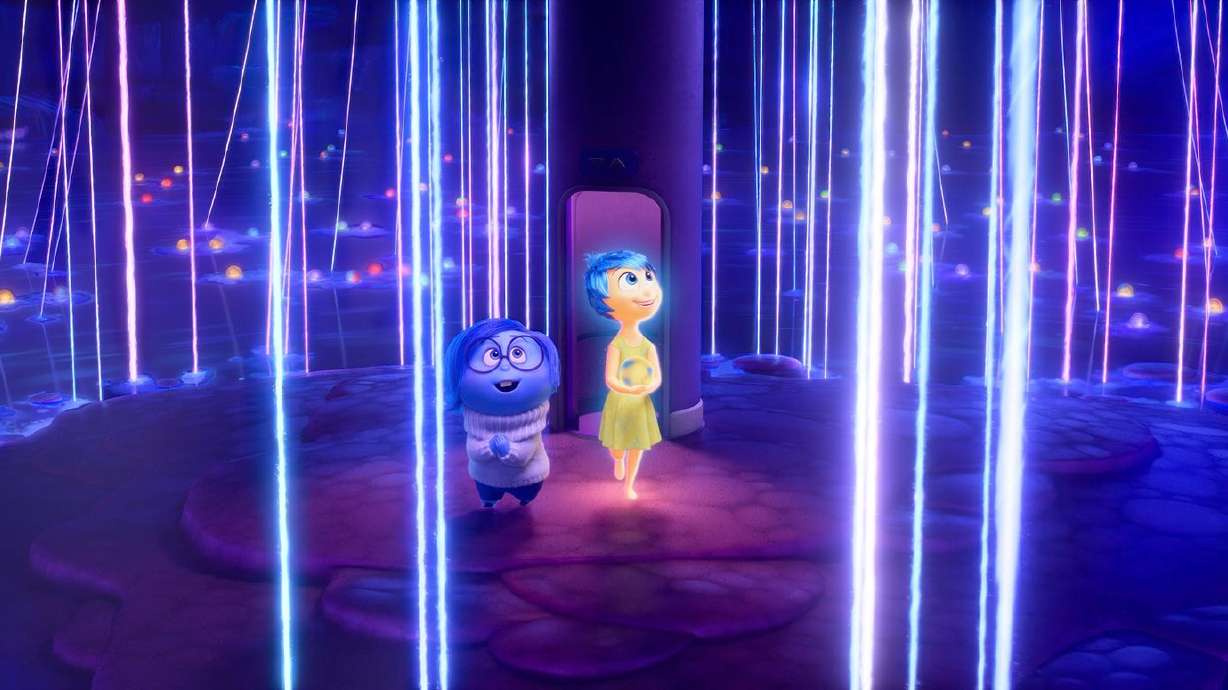Estimated read time: 4-5 minutes
This archived news story is available only for your personal, non-commercial use. Information in the story may be outdated or superseded by additional information. Reading or replaying the story in its archived form does not constitute a republication of the story.
SALT LAKE CITY — It's been nearly two months since Disney and Pixar released their newest film, "Inside Out 2," which has allowed millions of viewers some time to process the experience.
The latest installment in the "Inside Out" franchise takes viewers on a tour of the inner workings of main character Riley's mind as she enters her teenage years. That comes on the heels of the first film, where viewers were introduced to the core emotions personified in the characters Joy, Sadness, Anger, Fear and Disgust. The sequel introduces more complex emotions, including Anxiety, Envy, Ennui (boredom) and Embarrassment.
In an effort to create a "new Riley," Anxiety, with the help of her counterparts, bottle up the core emotions in an attempt to overhaul the budding teen. Anxiety's antics eventually send Riley into a full-fledged loss of self, and you guessed it: a panic attack.
We're all on our paths toward healing and integration of self, and this movie is a great tool for everyone of all ages.
–Gabby Accord, LCSW
While millions of viewers are relating to many of the experiences outlined in the movie, mental health professionals are calling "Inside Out 2" a "brilliant" way to describe the inner workings of the mind.
KSL.com spoke to two Utah licensed clinical social workers to get their take on the film and its implications in the wide world of mental health.
"A lot of the inner child work is done through the method of internal family systems, and the movie was just a really beautiful visual representation of that," Gabby Accord, founder at Mood Psychotherapy and Coaching, in Bountiful, said.
Internal family systems or IFS is the idea every human being is a system of protective and wounded inner parts led by a core self, operating on the premise that all minds are "naturally multiple," with many working parts.
"'Inside Out 2' did a really good job of showing us we are a collection of internal parts, and how these parts work together to build a sense of self," Accord said. "We have several of these pivotal moments where we have to decide if we're going to abandon who we are at our core in order to belong. Then you start to build a little bit more rounded sense of self that includes self-awareness where you realize that you have less desirable parts that you're not in conflict with, but just aware of."
'Anxiety' attacks
Before having an epiphany and total integration of self, Riley experienced a panic attack driven by Anxiety. Melissa Lambson, owner at New Leaf Counseling, in Sandy, said Pixar's portrayal of Anxiety was "spot on."
"I loved how Anxiety portrayed a different version of Riley because when Anxiety takes over, you start to see behaviors that aren't indicative of her true character," she said. "Anxiety can cause that fight, flight or freeze response, and in the movie, they showed the freeze response during the panic attack. And then you feel this compassion for Anxiety because she was just trying to protect Riley."
Accord agrees that the portrayal of Anxiety, and Riley's relationship with it, is something viewers can benefit from seeing.
"What stood out to me was how helpful it is to be kind to anxiety," she said. "Anxiety got out of control, but after she was taken from the driver's seat, she was given a little place to sit and a snack. I just loved how they showed that Anxiety should never be driving but it should have a place."
Something for everyone
Lambson said she watched the movie with her teenage daughter during a trip to a national volleyball tournament. As a former collegiate athlete herself, who specializes in mental health for athletes, Lambson said watching Riley navigate many of her obstacles as an athlete, highlighted the need for mental health awareness in that space. But, in addition to athletes, she said the film offers something for everybody.
"It seems like the editors didn't really have an agenda," she said. "They took a general enough tone that people could have their own experience with it. You know it's a good movie when they portray a scene and any person can put themselves in it and get something totally different. It's a brilliant movie."
Accord said she hopes people of all ages and walks of life can find healing in the film.
"I thought it was so beautifully done," Accord said. "I wouldn't want somebody to go in there and feel any shame that they were not able to resolve some of these things sooner. We're all on our paths toward healing and integration of self, and this movie is a great tool for everyone of all ages."









